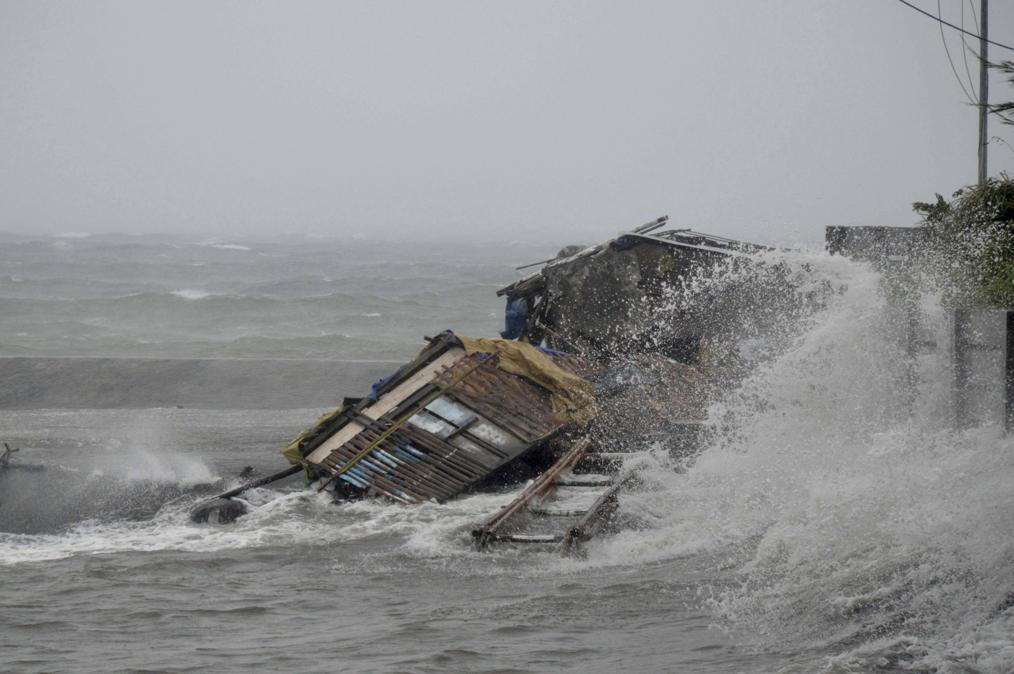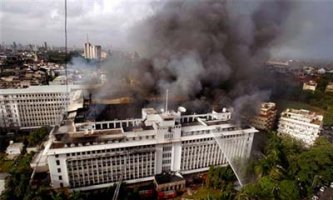November 9, 2013
MANILA: Typhoon Haiyan, possibly the strongest storm ever to hit land, was barrelling out of the Philippines on Saturday after it flattened houses, triggered landslides and floods and knocked out power and communications across a number of islands.

November 9, 2013
MANILA: Typhoon Haiyan, possibly the strongest storm ever to hit land, was barrelling out of the Philippines on Saturday after it flattened houses, triggered landslides and floods and knocked out power and communications across a number of islands.

A house is engulfed by the storm surge brought about by powerful Typhoon Haiyan that hit age in Legazpi city, ALbay province Friday, November 8, 2013,about 520 kilometers (325 miles) south of Manila, Philippines.
In the central Philippines, nearly all houses in Tacloban in Leyte province with a population of about 220,000, were toppled and casualties were feared to be massive, a disaster official said.
"Almost all houses were destroyed, many are totally damaged. Only a few houses are left standing, but with partial damages," Major Rey Balido, a spokesman for the national disaster agency, told Reuters.
"Our disaster officials can't give a number on casualties yet, the communication lines are down," Balido said. "But I asked our teams to send us even a crude body count, they are just using a satellite phone and the signal is poor."
Early official reports said at least four people had died, four others were missing and seven were injured by the typhoon.
Local radio reports said at least two more people had been killed on Cebu island, a popular tourist destination.

Debris litter the road by the coatal village in Legazpi city following a storm surge brought about by powerful Typhoon Haiyan in ALbay province Friday, November 8, 2013,about 520 kilometers (325 miles) south of Manila, Philippines.
Haiyan, a Category-5 typhoon, had weakened after hitting land at least five times in the Philippines, but weather forecasters said it could strengthen again as it passes over the South China Sea before heading to Vietnam on Sunday.
The typhoon was hovering 440 kilometers west of San Jose, in southwestern Occidental Mindoro province, packing winds of a maximum 175 kph, with gusts of up to 210 kph.
The storm lashed the islands of Leyte and Samar with 275-kph wind gusts and 5-6 metre (15-19 ft) waves on Friday before scouring the northern tip of Cebu province.
It weakened slightly as it moved west northwest towards Capiz and Aklan provinces and near the tourist island of Boracay, later hitting Mindoro island.
About a million people took shelter in 37 provinces, after President Benigno Aquino appealed to people in the path of the typhoon to leave vulnerable areas, such as river banks, coastal villages and mountain slopes.
Teams from communications and power companies were trying to restore services, but authorities warned that may take days.
Ferry services and airports in the central Philippines remained closed. The military said it was deploying at least one C-130 cargo plane loaded with relief goods and emergency supplies to Tacloban city early on Saturday.
Haiyan was the second Category 5 typhoon to hit the Philippines this year after Typhoon Usagi in September. An average of 20 typhoons strike the Philippines every year, and Haiyan was the 24th in 2013.
Last year, Typhoon Bopha flattened three towns on southern Mindanao region, killed 1,100 people and caused damage totaling more than $1 billion.
Courtesy: Reuters
















































































































